Wyoming, a mountain state in the Western United States, is not only a wild land with historic cowboy towns but also a priceless treasure of world natural heritage. From vast national forests and majestic snow-capped mountains to surreal hot springs and vibrant red sandstone canyons, Wyoming presents a diverse and breathtaking natural tapestry, captivating any adventurous heart. If you are nurturing a journey back to unspoiled nature and want to experience the wonders bestowed by creation, Wyoming is the ideal destination, where natural heritage is not just for viewing but for living every moment to the fullest.
Wyoming proudly boasts world-renowned national parks and nature reserves, each with its unique beauty, promising visitors unforgettable experiences. Join “Du lịch khắp thế gian” (Travel Around the World) to discover the gems of Wyoming’s natural heritage, to feel the grandeur, magnificence, and mysteries hidden within this land.
Wyoming – The Natural Gem of the United States
Wyoming, nicknamed the “Equality State,” is not only famous for its Wild West history and free-spiritedness but also a paradise for those passionate about exploring natural beauty. It is home to numerous invaluable natural heritages, from the world’s first national park, Yellowstone, to the magnificent Grand Teton range, and the awe-inspiring Devil’s Tower National Monument. Wyoming is a perfect blend of pristine landscapes, diverse ecosystems, and unique geological wonders, creating an irresistible attraction for visitors from all over the world.
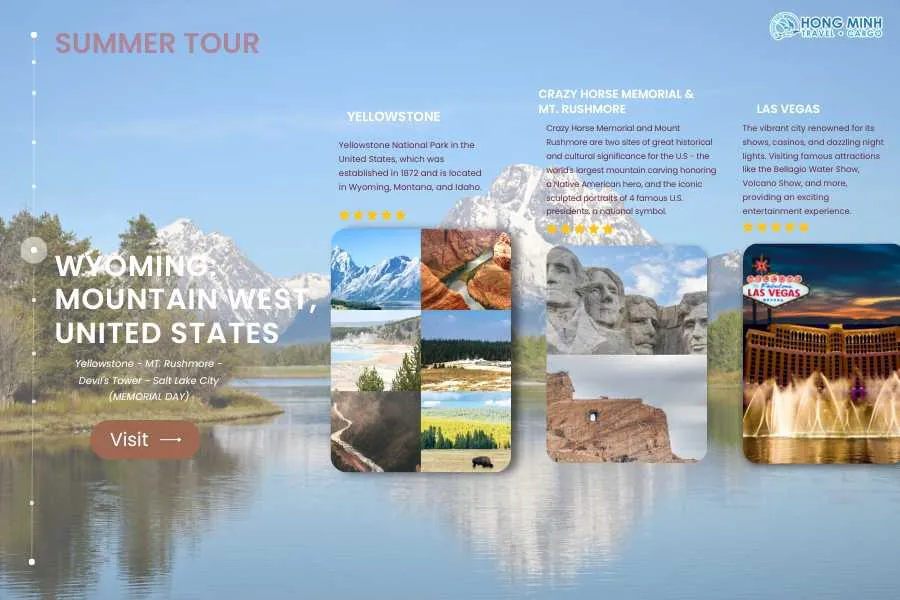
Wyoming’s natural heritage is not limited to famous national parks. This state also possesses countless wilderness areas, national forests, and wildlife refuges, where visitors can immerse themselves in nature and participate in outdoor activities such as hiking, climbing, camping, fishing, and wildlife watching. Each season in Wyoming brings its own beauty, from spring with blooming wildflowers, summer with lush greenery and melting glaciers, autumn ablaze with golden foliage, to winter blanketed in white snow, creating a romantic and magical setting.
Yellowstone National Park: A Unique Geothermal Wonderland
When mentioning Wyoming’s natural heritage, Yellowstone National Park, the first national park in the world and one of the most famous destinations in the United States, is a must-mention. Yellowstone is not just an ordinary national park; it’s also an active supervolcano, home to over 10,000 different geothermal features, including hot springs, geysers, mud pots, and fumaroles. The diversity and abundance of geothermal phenomena in Yellowstone have created a unique and surreal landscape, attracting millions of visitors each year.

One of Yellowstone’s most prominent highlights is the Grand Prismatic Spring, the largest hot spring in the United States and the third-largest in the world. With its enormous size and vibrant rainbow colors, the Grand Prismatic Spring amazes anyone who beholds it. The unique colors of this hot spring are created by different species of thermophilic bacteria living in the water, each thriving at a different temperature, creating color rings from blue in the center to green, yellow, orange, and red at the outer edges.

Besides the Grand Prismatic Spring, Yellowstone is also famous for Old Faithful Geyser, one of the most reliable geysers in the world. Approximately every 90 minutes, Old Faithful erupts, spewing a column of hot water tens of meters high into the air, creating a spectacular display of nature. Visitors can easily observe Old Faithful from the viewing area built around this geyser and witness the extraordinary power of the Earth’s depths.
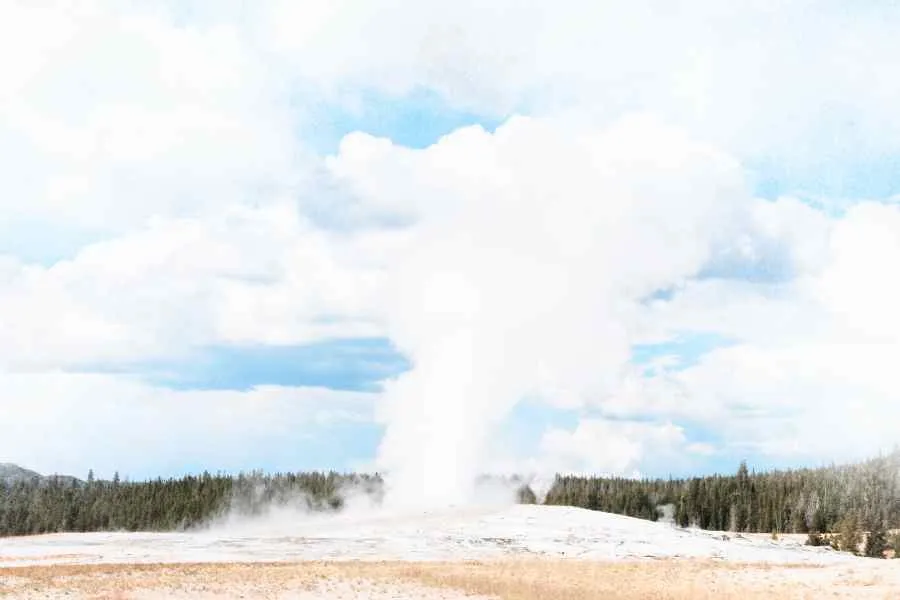
In addition to geothermal wonders, Yellowstone is also home to a rich wildlife ecosystem. The park is one of the few remaining places in North America with a full complement of large mammal species that once inhabited the region, including grizzly bears, gray wolves, bison, elk, white-tailed deer, and pronghorn. Visitors can join wildlife viewing tours for a chance to witness these animals firsthand in their natural habitat.
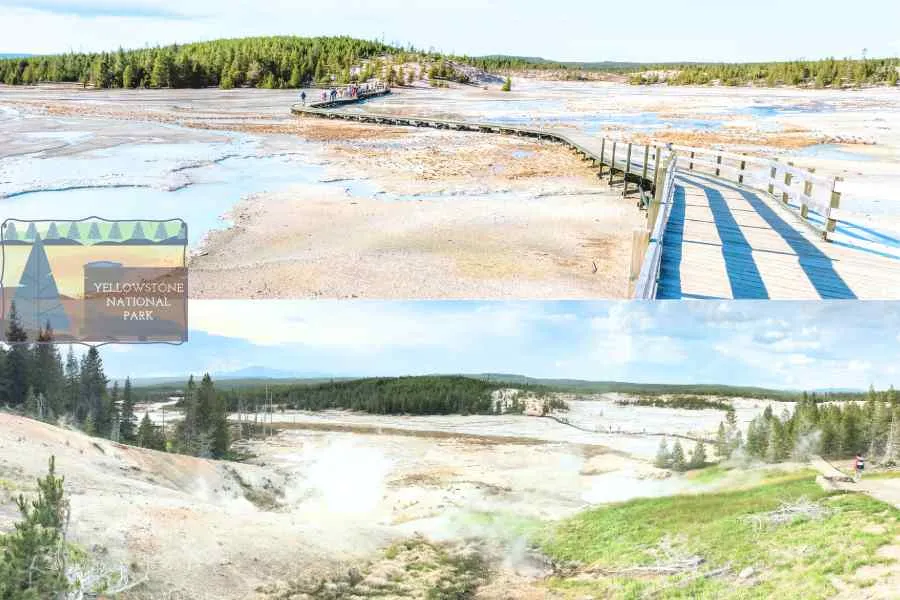
Grand Teton National Park: The Majestic Beauty of Mountains
Located just south of Yellowstone National Park, Grand Teton National Park is another of Wyoming’s natural heritage sites, famous for the majestic beauty of the Teton Range. This mountain range rises abruptly from the flat Jackson Hole valley, creating a picturesque landscape of towering mountains, clear blue lakes, and verdant pine forests, as beautiful as a painting. Grand Teton is an ideal destination for those who love outdoor activities such as mountaineering, hiking, kayaking, and fishing.
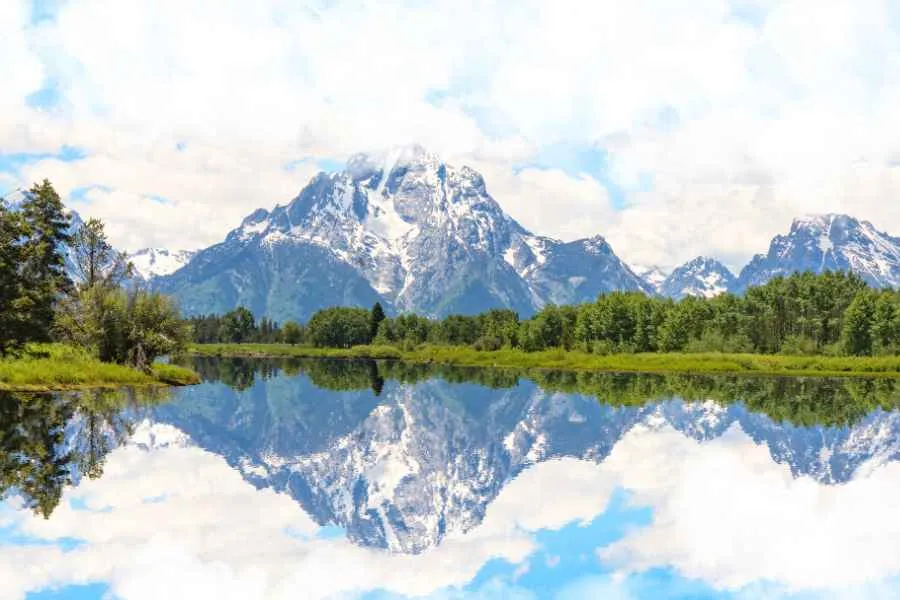
The highlight of Grand Teton is the Teton Range, with the highest peak, Grand Teton, reaching an elevation of 4,199 meters above sea level. This mountain range was formed millions of years ago by geological activities and eroded by glaciers over thousands of years, creating jagged peaks, deep canyons, and stunning glacial lakes. Visitors can admire the beauty of the Teton Range from various viewpoints in the park or participate in mountaineering activities to conquer the peaks and enjoy panoramic views of the park from above.

Jackson Lake is the largest natural lake in Grand Teton National Park, located at the foot of the Teton Range. This lake is not only a beautiful landscape but also an ideal destination for water activities such as swimming, kayaking, and fishing. Visitors can rent boats and explore Jackson Lake, admire the Teton Range reflected in the clear blue water, or relax on the beach and enjoy the fresh air of nature.

Devil’s Tower National Monument: Mysterious and Magnificent
Devil’s Tower National Monument, located in northeastern Wyoming, is a unique and mysterious geological wonder. This giant basalt tower rises over 386 meters above the surrounding terrain, with hexagonal columns stacked perfectly on top of each other, creating an incredibly impressive and unusual shape. Devil’s Tower is not only an attractive tourist destination but also a sacred site for many Native American tribes and an inspiration for many legends and mythical stories.

The origin of Devil’s Tower remains a mystery to scientists. A popular theory suggests that Devil’s Tower is the remnant of an extinct volcano, where the harder basalt rock resisted erosion over time, while the surrounding softer rock eroded away. However, the exact formation process of this tower is still being studied and debated.
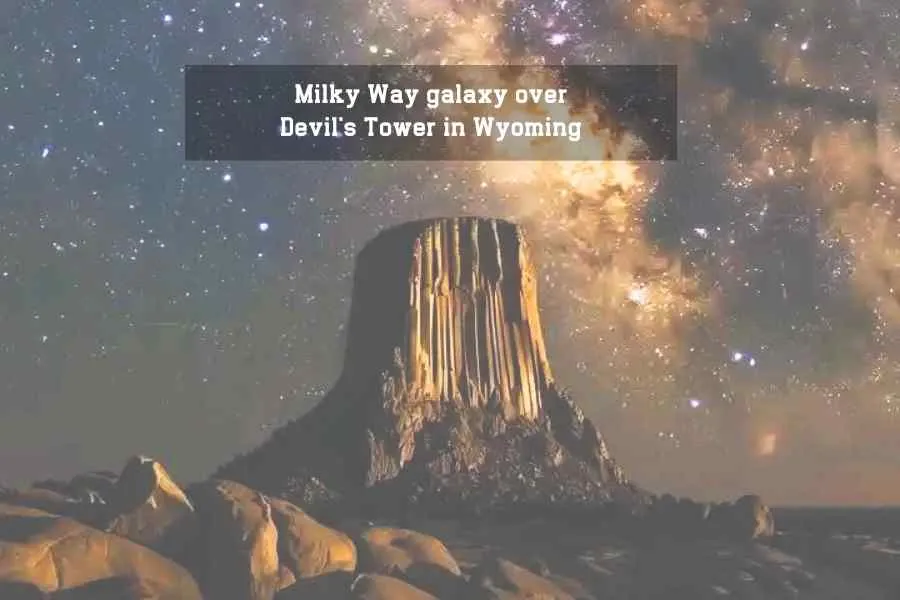
Devil’s Tower attracts visitors not only with its majestic and mysterious beauty but also as an ideal destination for rock climbing. With hundreds of different climbing routes, Devil’s Tower is a fascinating challenge for professional climbers. However, climbing at Devil’s Tower should also be done cautiously and respectfully, especially since it is a sacred site for Native Americans.
Tips for Exploring Wyoming’s Natural Heritage
To have a complete and memorable journey exploring Wyoming’s natural heritage, visitors should note a few things:
- Ideal Time to Visit: Summer (from June to August) is the best time to visit Wyoming, when the weather is warm and pleasant, and all roads and hiking trails are open. However, this is also the peak tourist season, so tourist crowds will be larger, and service prices will be higher. Spring and autumn are also good options, with cooler weather and vibrant natural landscapes. Winter in Wyoming is very cold and snowy, suitable for winter sports activities such as skiing and snowboarding.
- Transportation: Renting a car is the most convenient means of transportation to explore Wyoming, especially when you want to visit many national parks and wilderness areas. The roads in Wyoming are wide and easy to drive, but you need to pay attention to driving carefully, especially on mountain roads and dirt roads.
- Preparation: Dress appropriately for the weather and activities you plan to participate in. Bring comfortable hiking shoes, a warm jacket, hat, sunglasses, sunscreen, and insect repellent. Don’t forget to bring a camera to capture the beautiful moments of Wyoming’s natural heritage.
- Book in Advance: If you travel during the peak season, it is advisable to book hotel rooms, tours, and entrance tickets to national parks in advance to ensure availability and the best prices.
Conclusion
Wyoming, with its invaluable natural heritage, is an unmissable destination for those who love exploring the unspoiled and majestic beauty of nature. From the surreal Yellowstone National Park, the magnificent Grand Teton National Park, to the mysterious Devil’s Tower National Monument, Wyoming promises to bring you unforgettable experiences and memorable moments. Plan your journey to explore Wyoming’s natural heritage today and prepare to be overwhelmed by the incredible beauty of this land.